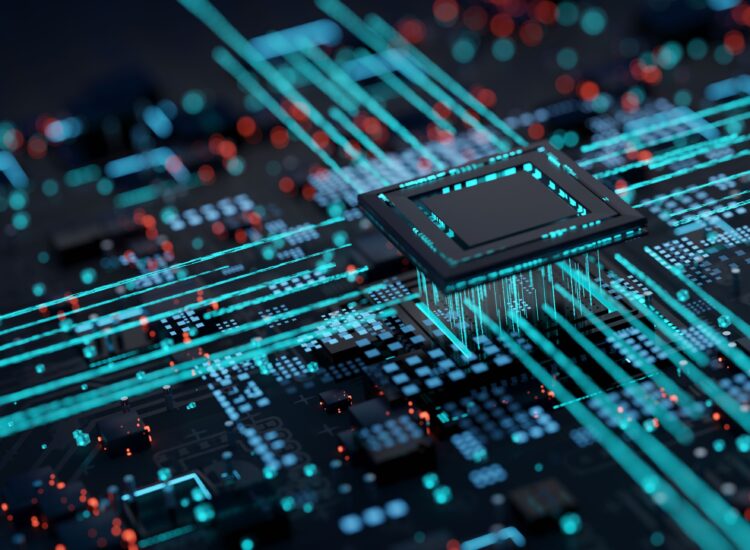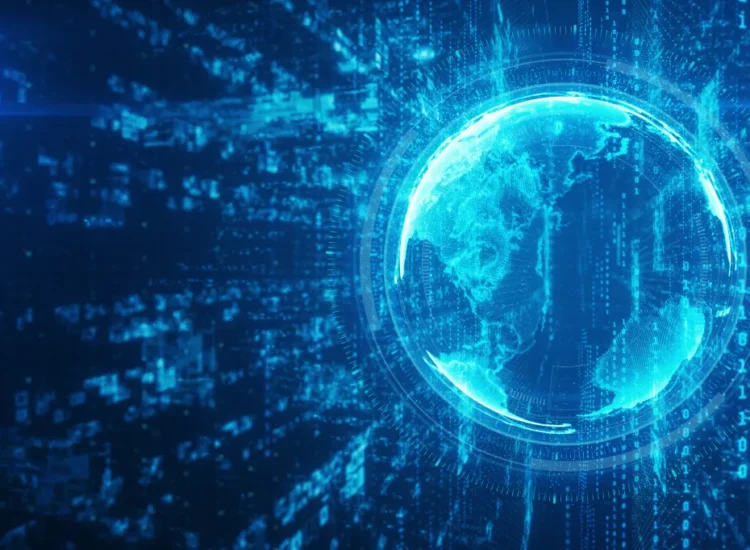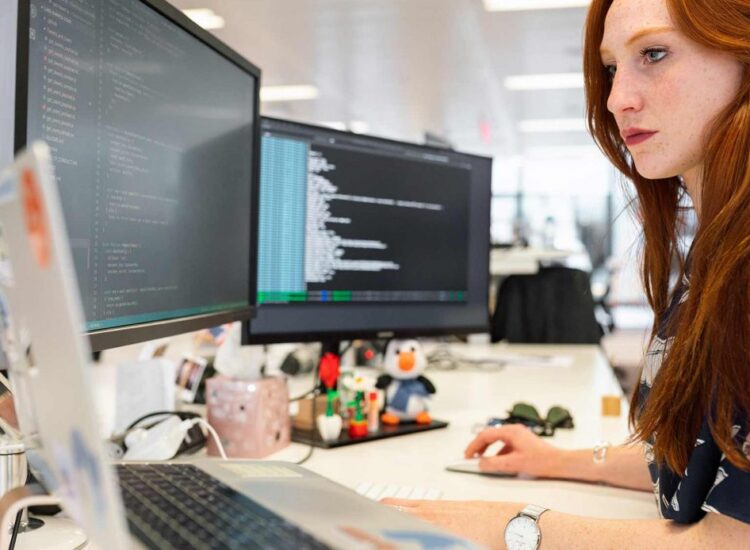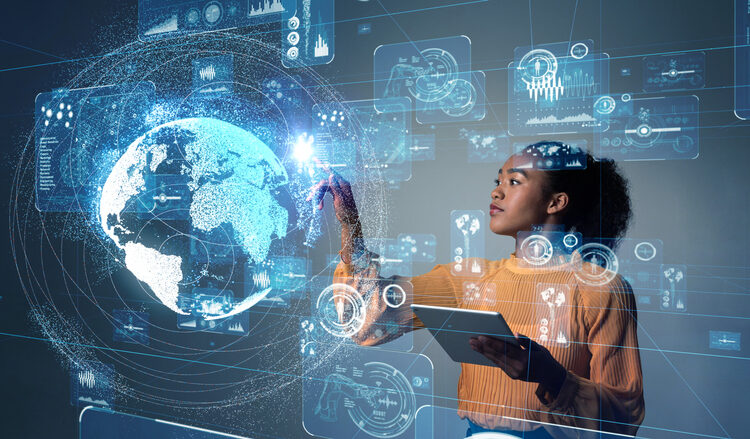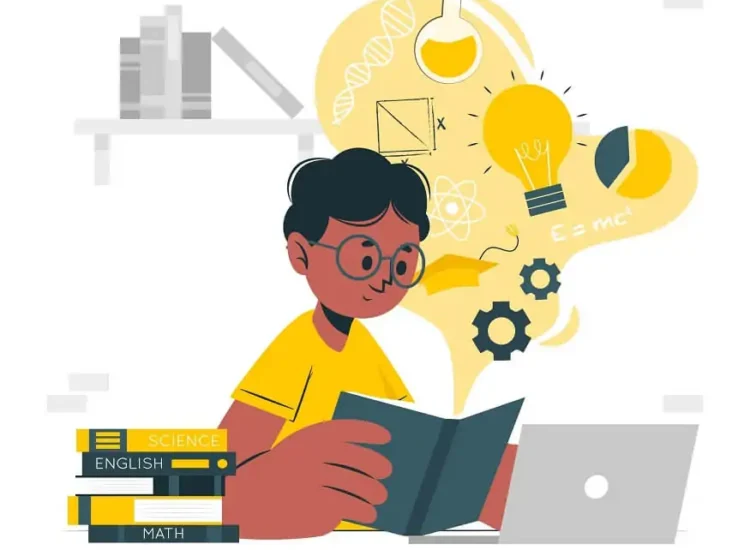The Dawn of a New Era: Exploring the World of Artificial Intelligence Videos
Video has become the dominant medium of communication, entertainment, and information consumption in the digital age. From short social media clips to feature-length films, video captures our attention and tells stories in a uniquely powerful way. Traditionally, creating video has been a complex, time-consuming, and often expensive process, requiring specialized equipment, technical skills, and significant manual effort at every stage, from filming and editing to adding effects and sound. However, the rapid advancements in artificial intelligence are fundamentally changing this landscape, giving rise to the era of artificial intelligence videos.
Toc
When we talk about artificial intelligence videos, we’re entering a realm where AI is not just the subject of the video, but an active participant in its creation and enhancement. It refers to videos that are generated, modified, or analyzed using AI technology, streamlining workflows, enabling new creative possibilities, and making video production more accessible than ever before. Artificial intelligence videos are appearing everywhere, from automatically generated social media content and personalized marketing ads to AI-assisted documentaries and entirely synthetic video sequences. This technology is poised to revolutionize how video content is produced, distributed, and consumed globally.
Understanding artificial intelligence videos involves exploring the ways AI integrates into the video lifecycle. It’s about automated editing, AI-powered visual effects, synthetic narrations, and even the complete generation of video content from simple text prompts. These capabilities are empowering a new generation of creators and enabling businesses to scale their video efforts dramatically. As AI tools become more sophisticated and widely available, the potential for artificial intelligence videos is expanding exponentially, promising a future where video creation is faster, more efficient, and remarkably innovative. This article delves into what artificial intelligence videos entail, the technology driving them, their wide-ranging applications, and what the future holds for this transformative field.
The AI Revolution in Video Creation: What are Artificial Intelligence Videos?
The term “artificial intelligence videos” can sometimes be ambiguous. Does it mean videos explaining AI? Or videos created by AI? In the context of the burgeoning technological field, it primarily refers to the latter: videos where artificial intelligence plays a crucial role in the production process itself. AI is stepping out of the research lab and into the editing suite, the animation studio, and the production pipeline, fundamentally altering how video content comes into existence.

Defining “Artificial Intelligence Videos” – More Than Just a Topic
At its core, artificial intelligence videos represent the outcome of applying AI algorithms and models to the tasks involved in video production. This isn’t just about adding an “AI filter” or a single effect. It’s about leveraging AI across multiple stages, from initial concept and scripting to final editing, post-production, and even personalization for specific viewers.
Think about the traditional process: A script is written, actors or subjects are filmed, footage is manually cut and arranged in an editor, visual effects and motion graphics are painstakingly created, music and sound effects are added, color correction is applied, and subtitles are transcribed and timed. Each step requires human expertise, time, and labor.
Now, imagine inserting AI into that process. An AI helps write the script or suggests shot ideas. An AI can generate visuals or even short video clips from text descriptions. An AI can automatically create a natural-sounding voiceover in any language. An AI can analyze raw footage, identify the best takes, cut them together, and even add transitions. An AI can remove unwanted objects, enhance resolution, stabilize shaky footage, or change the style of a video. This is the essence of artificial intelligence videos: videos where AI acts as a co-creator, an intelligent assistant, or in some cutting-edge cases, the primary engine of creation.
It’s important to distinguish artificial intelligence videos from videos about AI. While a documentary explaining machine learning might be fascinating, it doesn’t necessarily use AI in its production beyond standard tools. Artificial intelligence videos, as the term is evolving, specifically highlight the application of AI technology in the video creation workflow itself. This could range from videos heavily relying on AI-generated visuals and scripts to traditionally shot videos enhanced or edited using powerful AI tools. The key is the presence and impact of AI on the final video output.
How AI is Changing the Video Production Workflow
The traditional video production workflow, while proven, often involves bottlenecks and labor-intensive tasks. AI is stepping in to address these challenges, making the process faster, more efficient, and in many cases, more affordable. The integration of AI is not necessarily about replacing human creativity entirely (at least, not yet), but about augmenting it and automating repetitive or complex tasks.
One of the most significant impacts of AI is on the speed of production. Tasks that previously took hours or days, such as sifting through hours of footage to find specific moments, creating rough cuts, or generating captions, can now be performed by AI in minutes. This rapid turnaround allows creators and businesses to produce content much faster, keeping pace with the demand for fresh video content on platforms like YouTube, TikTok, and Instagram. A process that might have required a team of editors can now be significantly accelerated with AI-powered assistance, enabling the creation of many more artificial intelligence videos in the same timeframe.
AI also contributes to cost reduction. By automating tasks that previously required skilled labor – from basic editing to generating synthetic voiceovers or simple animations – AI tools can lower the overall cost of video production. This democratizes video creation, making it accessible to smaller businesses, independent creators, and individuals who may not have the budget for traditional production methods. Creating artificial intelligence videos can significantly reduce expenses associated with voice actors, extensive manual editing, and certain types of graphic design.
Furthermore, AI enhances scalability and personalization. Imagine needing to create thousands of slightly different video ads, each tailored to a specific demographic or individual viewer. Manually editing these variations would be impossible. AI can take a base video and automatically generate personalized versions by swapping out text, images, or even adjusting the narrative slightly based on viewer data. This level of hyper-personalization in artificial intelligence videos was previously unattainable. Businesses can now create video content campaigns that are not only faster and cheaper to produce but also far more targeted and effective.
Finally, AI is fostering new creative possibilities. AI video generators, while still nascent for generating long, complex narratives, can create entirely new visual styles, animations, or sequences that would be difficult or impossible for humans to achieve manually. AI-powered visual effects tools can perform complex manipulations with relative ease. This empowers creators to experiment with aesthetics and storytelling techniques that were previously out of reach, pushing the boundaries of what artificial intelligence videos can be. The workflow is shifting from purely manual execution to guiding and curating AI-driven processes, opening up novel avenues for artistic expression.
1. https://lifeify.net/mmoga-cloud-app-hosting-the-ultimate-guide-for-startup-founders/
3. https://lifeify.net/mmoga-the-best-web-hosting-for-beginners-in-2024/
4. https://lifeify.net/mmoga-find-the-best-personal-web-hosting-for-your-small-business/
5. https://lifeify.net/mmoga-the-sound-of-tomorrow-exploring-voice-artificial-intelligence/
The transformation of the video production workflow by AI is undeniable. By accelerating processes, reducing costs, enabling personalization, and unlocking new creative tools, AI is making the creation of artificial intelligence videos a more accessible, efficient, and innovative endeavor.
Capabilities of AI in Video: From Script to Screen
The influence of artificial intelligence on video production is pervasive, touching almost every stage of the creative and technical process. AI tools are becoming increasingly specialized, offering powerful capabilities for generating content, assisting with complex edits, and enhancing the final quality of artificial intelligence videos.
Generating Visuals, Scripts, and Voiceovers with AI
One of the most exciting frontiers in artificial intelligence videos is the ability of AI to generate content from minimal input. This includes generating written scripts, creating visual elements, and producing synthetic voiceovers.
AI Script Generation tools use natural language processing to assist in writing video scripts. Given a topic, target audience, and desired tone, AI can generate initial drafts, suggest dialogue, brainstorm ideas, or even structure the narrative. While often requiring human refinement, these tools can kickstart the creative process and overcome writer’s block, accelerating the initial phase of creating artificial intelligence videos.
AI Video and Image Generation is a rapidly evolving field. AI models, trained on vast datasets of images and videos, can now generate unique visuals based on text prompts. While full-length, coherent video generation from text is still in its early stages and often results in short, abstract, or template-based clips, the technology for generating high-quality images and shorter video segments is advancing rapidly. Creators can use these AI-generated visuals as source material, backgrounds, or supplementary content within their artificial intelligence videos, saving time on filming or graphic design. Imagine describing a fantastical landscape or a specific abstract concept and having an AI generate visuals for it in seconds.
As discussed in the previous topic, AI Voice Generators are also a critical component of artificial intelligence videos. These tools convert written text into natural-sounding spoken audio. This eliminates the need to hire voice actors or record narration yourself. AI voiceovers can be generated quickly, are easily edited by changing the text, and can be created in multiple languages with various accents and emotional tones. This is invaluable for creating explainer videos, tutorials, international content, or any video requiring narration without the complexity and cost of traditional voice recording, significantly contributing to the efficiency of producing artificial intelligence videos. The ability to choose from a library of diverse AI voices or even clone a specific voice adds another layer of customization to the generated audio track.
These generative capabilities mean that the starting point for creating artificial intelligence videos can be as simple as an idea or a written script, with AI filling in the gaps by generating visuals and audio, drastically reducing the need for traditional filming and recording setups for certain types of video content.
AI-Powered Editing, Enhancement, and Personalization
Beyond generation, AI tools are becoming indispensable in the post-production phase of creating artificial intelligence videos, automating complex editing tasks and enhancing the quality of the footage.
AI Video Editing tools can analyze raw footage and perform automated tasks that significantly speed up the editing process. This includes:
- Automatic Scene Detection: Identifying cuts and different scenes within long video files.
- Highlight Reel Generation: Analyzing footage to automatically select and assemble the most engaging moments, useful for news, sports, or social media content.
- Smart Cutting: Using AI to make cuts based on dialogue, action, or other criteria, creating initial rough cuts much faster than manual editing.
- Automated Transitions and Effects: Suggesting or applying appropriate transitions and basic visual effects.
AI Video Enhancement focuses on improving the technical quality of video footage. This includes:
- Upscaling: Using AI to increase the resolution of lower-quality video without losing detail, making old or archived footage suitable for modern displays.
- Noise Reduction: Removing unwanted visual noise or grain from footage.
- Color Correction and Grading: Assisting in balancing colors and applying specific visual styles.
- Object Removal/Insertion: AI can analyze scenes and intelligently remove unwanted elements (like a microphone in the shot) or even insert new objects realistically.
- Video Stabilization: Automatically smoothing out shaky handheld footage.
AI-Powered Subtitling and Captioning is another incredibly useful application. AI can automatically transcribe spoken dialogue in a video and generate accurate subtitles or captions, saving hours of manual transcription and timing. This improves accessibility and makes videos more searchable.
AI for Personalization allows for tailoring video content to individual viewers at scale. By analyzing viewer data, AI can automatically create slightly different versions of a video – perhaps changing the opening hook, specific product shown, or the call to action – to be more relevant to that viewer. This is particularly powerful in marketing and online advertising, creating highly effective artificial intelligence videos that resonate more deeply with the intended audience. Imagine an e-commerce site where product videos slightly adapt based on the user’s Browse history.
These AI-powered capabilities for editing, enhancing, and personalizing video content are not only making the production process faster and more efficient but also enabling creators to achieve higher technical quality and deliver more targeted, impactful artificial intelligence videos.
Impact and Future: Why Artificial Intelligence Videos Matter
The emergence and rapid development of artificial intelligence videos are having a profound impact across various industries and are set to reshape the future of how we interact with visual media. Understanding this impact is key to leveraging the technology effectively and responsibly.
1. https://lifeify.net/mmoga-the-sound-of-tomorrow-exploring-voice-artificial-intelligence/
2. https://lifeify.net/mmoga-the-best-web-hosting-for-beginners-in-2024/
3. https://lifeify.net/mmoga-high-performance-vps-hosting-for-e-commerce-success/
4. https://lifeify.net/mmoga-once-human-private-server-a-players-perspective/

Benefits and Applications Across Industries
The benefits of incorporating AI into video production are manifold, driving its adoption across diverse sectors. The primary advantages include:
- Increased Efficiency: AI automates tedious and time-consuming tasks, allowing human creators to focus on more creative and strategic aspects. This accelerates production pipelines significantly.
- Reduced Costs: By automating processes and reducing the need for certain manual labor, AI can lower the overall expense of creating video content, making it more accessible to a wider range of creators and organizations.
- Enhanced Scalability: AI enables the production of video content at scale, making it feasible to generate large volumes of videos or personalized versions for different audiences, which would be impossible with manual methods alone.
- Greater Accessibility: AI tools like automated captioning, transcription, and multi-language voiceovers make video content more accessible to people with disabilities and global audiences.
- New Creative Possibilities: AI generative tools and advanced enhancement capabilities allow creators to produce visuals and effects that were previously difficult, expensive, or impossible to achieve, pushing the boundaries of visual storytelling and leading to novel forms of artificial intelligence videos.
- Personalization: AI allows for the creation of highly tailored video experiences for individual viewers, increasing engagement and effectiveness in areas like marketing, education, and entertainment.
These benefits translate into real-world applications across numerous industries:
- Marketing & Advertising: Creating personalized video ads, social media content, product demos, and explainer videos quickly and at scale.
- News & Media: Automatically generating news clips from text, creating highlight reels of events, and providing multi-language voiceovers for international reporting.
- E-learning & Education: Generating educational videos, creating audio versions of lectures or texts, providing personalized video feedback to students.
- Corporate Training: Producing training modules, safety videos, and internal communications faster and in various languages.
- Entertainment: Assisting in animation, visual effects, character rigging, dubbing, and even generating short creative video pieces.
- E-commerce: Creating automated product videos from images and text, or generating personalized video shopping experiences.
The impact of artificial intelligence videos is already significant and will continue to grow as the technology matures, offering powerful tools for communication and creativity.
Challenges, Ethics, and the Evolving Landscape of AI Videos
Despite the exciting potential, the rise of artificial intelligence videos also brings challenges and ethical considerations that must be navigated carefully.
One significant challenge is the current quality and naturalness of AI-generated visuals and voices. While improving rapidly, fully AI-generated video can sometimes still look or sound artificial, suffering from the “uncanny valley” effect where it’s close to human-level but just slightly off, creating a sense of unease. Complex narratives, nuanced emotions, and specific artistic styles can still be difficult for AI to replicate convincingly without significant human guidance and editing.
Ethical concerns are perhaps the most pressing challenge. The ability to create realistic synthetic videos, particularly deepfakes (videos manipulated using AI to replace one person’s likeness or voice with another’s), poses serious risks. This technology can be used to spread misinformation, create fraudulent content, damage reputations, and erode trust in visual media. Responsible development, clear ethical guidelines, user education, and the development of robust detection tools are essential to mitigate these risks associated with artificial intelligence videos. Issues around copyright of AI-generated content and the use of training data also need to be addressed.
There are also concerns about the impact on jobs within the video production industry. As AI automates tasks, roles may shift, requiring professionals to adapt and acquire new skills focused on managing and guiding AI tools rather than performing purely manual work.
Looking ahead, the evolving landscape of artificial intelligence videos is expected to bring even more sophisticated capabilities. We can anticipate AI becoming better at understanding context, generating longer and more coherent narratives, creating more emotionally resonant voices and visuals, and potentially enabling real-time AI video generation. The integration of AI with other technologies, like virtual and augmented reality, will likely open up entirely new forms of interactive artificial intelligence videos.
Navigating these challenges while embracing the transformative potential is key. Artificial intelligence videos are not just a technological trend; they represent a fundamental shift in how we create and consume visual stories. As the technology continues to mature, its influence will only deepen, making the ability to understand and work with AI-powered video tools an increasingly valuable skill in the digital world.
In conclusion, artificial intelligence videos mark a significant evolution in the realm of digital content. By integrating AI into every stage of the video production process, from generating initial concepts and visuals to automating complex editing and enabling hyper-personalization, AI is making video creation faster, cheaper, more accessible, and creatively expansive. While ethical considerations and technological challenges remain, the benefits are undeniable, driving the adoption of artificial intelligence videos across industries for marketing, education, entertainment, and more. As AI continues its rapid advancement, the capabilities and potential of artificial intelligence videos will only continue to grow, reshaping the future of how we tell stories and share information through the power of video. Understanding and exploring these tools today is key to participating in the exciting future of video creation.
